Like most everyone else on the planet I have an opinion about just about everything. Remember what they say about opinions*. However, as I get older and farther down the whiskey trail my feelings and opinions on certain whiskey related subjects tend to stem more from a frustration at the stifling mandates of others directed out at the masses and the reproduction of misinformation. A great example of this is the whole “Jack Daniels isn’t bourbon” argument that supposedly knowledgeable people continue to regurgitate. (Psst, JD can legally be called bourbon, they just choose not to.) I find both the misinformation and mandates more unbearable as time goes on. As a result, my opinions about such things become stronger and more forthcoming. It’s in this vein that I’d like to talk about glass.
I find glassware and its discussion to be a rather amusing and continually ongoing side note to whiskey drinking. Some of you may already want to stop me after that last sentence and correct me that specific glassware is more about “whiskey appreciation” than the mere drinking of the spirit. That’s fine; we’ll talk about that too. For the sake of this discussion let’s limit the drinking to enjoying your dram straight or with a little water. It’s hard to use most of the glassware we’ll talk about for scotch on the rocks or bourbon and ginger.
When you google the phrase “whiskey glass” the hit count comes in north of 16 million. “Scotch glass” gets you 15 million hits. “Bourbon glass” comes in at 9.1 million. “Whisky glass” comes in at a paltry 1.2 million hits. If you want to look at renowned glassware maker Riedel you can find multiple glasses specific to whiskey, scotch, bourbon, and unspecified spirits. I don’t really recommend going through all 40 million plus google hits. I looked at quite a few and I think it’s safe to pare the multitudes down to the following classifications:
• Rocks/Old Fashioned glasses
• Shot glasses
• Snifters
• Cordial glasses
• Nosing glasses
• Designated “whiskey” glasses
Of course if you roll like Tommy Gavin out of Rescue Me then you might drink your 8 fingers of Midleton’s Very Rare out of a Collins or highball glass but we’ll assume you have a little more restraint than that. So with this dizzying array of options how do you know what you should be using? Let’s talk about each in turn. (Note: Each of these glasses can be found in a multitude of designs but the depictions below should reflect a “typical” representation.)
Rocks Glasses
Rocks glasses and Old Fashioned glasses are the quintessential classic whiskey glass. They are typically in the 4 to 8 ounces range with solid bases and straight or slightly sloping sides. Think of the glass you’d be drinking your scotch out of as an extra on the set of Mad Men. The benefits are that this is a solid and hefty glass; easy to find; works with cocktails, on the rocks, or whiskey straight.
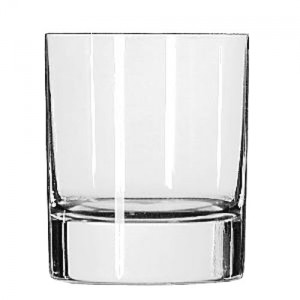
Shot Glasses
Anyone’s who ever imbibed in spirits of any kind could probably draw a picture of a shot glass. These range in so many different varieties that I almost couldn’t say what’s typical anymore. However, they tend to be in the 1 to 2 ounce range and are pretty solidly made. These are cheap to buy, don’t break easily, and compact enough to store anywhere. This glass lends itself more to the frat boy pounding type of whiskey consumption.
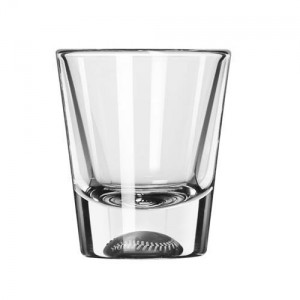
Cordial Glasses
Cordial glasses can come in almost as many varieties as shot glasses. They even kind of look like shot glasses on the end of stems. They almost always have a stem and also are typically in the 1 to 2 ounces range. The stem prevents heat transfer from the hand to the whiskey, preventing flavor alteration. Some varieties have a slightly tulip shaped top allowing for better nosing by concentrating the aromas. Think of drinking your whiskey with Grandmother on the terrace of the family estate.
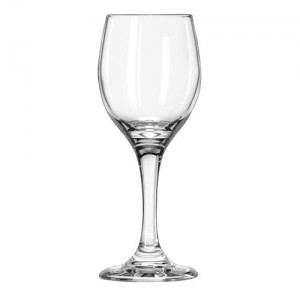
Snifters
Snifters are another type that most people have at least seen if not used. Originally designed for brandies, these glasses have a wide base, inward curving body, and a slight stem with a wide foot. Snifters can be relatively small or quite large in excess of 20 ounces. These glasses are intended to be held in the palm with the stem between the fingers. Resting the body of the glass in the palms allow for the slow warming of the spirit. Some folks like this aspect and others don’t. Also, like the cordial glasses the aromas are concentrated toward the opening by the shape. You might sport this glassware while sipping slowly in a leather lounge chair in a wood paneled study.
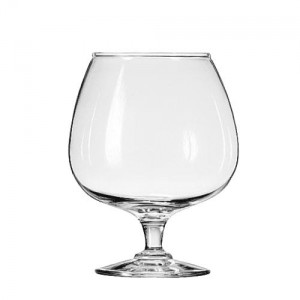
Nosing Glasses
Nosing glasses are growing in popularity with growth of fine spirits. Originally, these glasses were used mainly by spirit producers and blenders to nose their creations. Hence the name “nosing” glass. In many ways these glasses resemble a champagne flute with an opening designed to concentrate aromas. These glasses can be quite delicate so be care with use, cleaning, and storage. Some varieties even come with a little glass came to aroma from escaping between sips. Think of nosing whiskeys with Richard Paterson at a Whyte & Mackay laboratory.
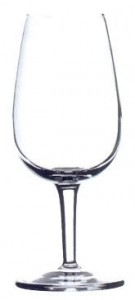
Designated Whiskey Glasses
Relatively new on the scene are a number designated whiskey glasses. Riedel offers version specific for scotch and bourbon while other companies offer many others. No glass has seen as much rapid growth in popularity as the Glencairn Whisky Glass (pictured below) which recently hit 7 million in total sales. I’m not going to say one designated whiskey glass is better than another. They all vary and they do so for specific reasons. Each glass has its own story. If any of these glasses interest you then I recommend checking out those stories to see why they are made the way they are. You might see one of these in your goody bag at the next WhiskyFest New York.
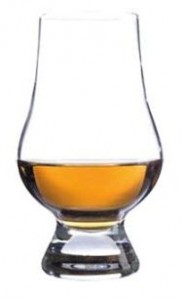
So with all these different variations available where does that leave us in figuring what we should use? Personally, I don’t really think it matters. All that matter is that you enjoy what you’re drinking. If there is a certain aspect of one of these types of glasses that appeals to your enjoyment of a fine drink then you might want to explore that offering. If aroma and enhanced flavor is your game then maybe a snifter, nosing glass, or designated whiskey glass might be a good option. If you want a sturdy glass with which to knock back your everyday dram then you might be a rocks or shot glass kind of person. You might even want to do a little trial and error to find what’s right for you. Don’t put so much credence in what glass others tells you to use.
At a recent meeting of the Georgia Bourbon Society I was discussing glass merits with a couple of the society founders. The general consensus of these men who are well learned in the ways of fine drink was that over time they’ve gravitated toward glasses that fit well in the hand. It’s more about comfort for them rather than appropriateness. I tend to agree. So what kind of glass do I use? Admittedly it depends on whether I’m reviewing a whiskey or simply drinking it. Regardless, it shouldn’t matter to you what I use. Use whatever you like best.
Drink wisely my friends,
Richard
* For those readers outside of the U.S. or those just not familiar with the expressions it goes like this: “Opinions are like assholes, everyone’s got one.”

